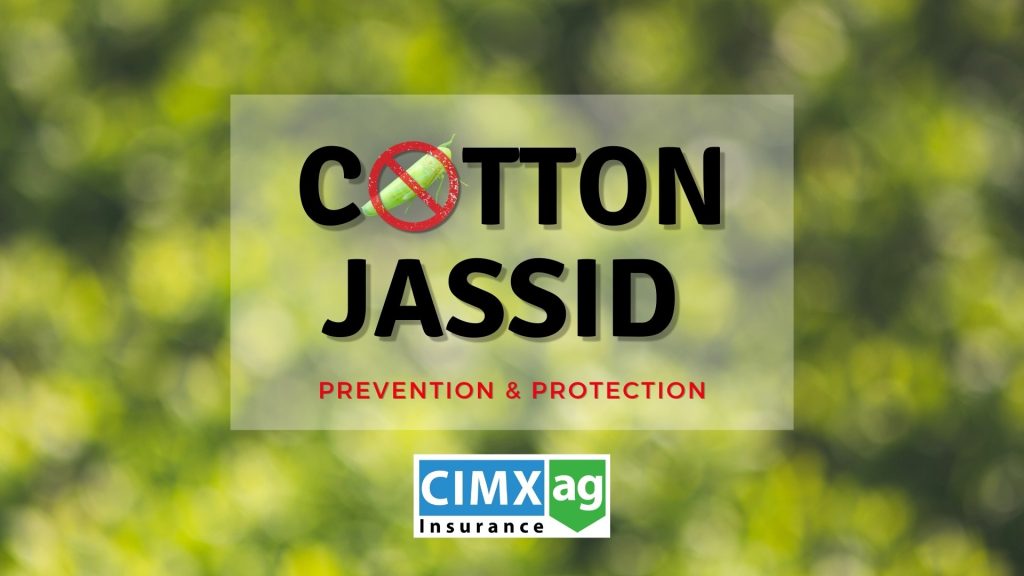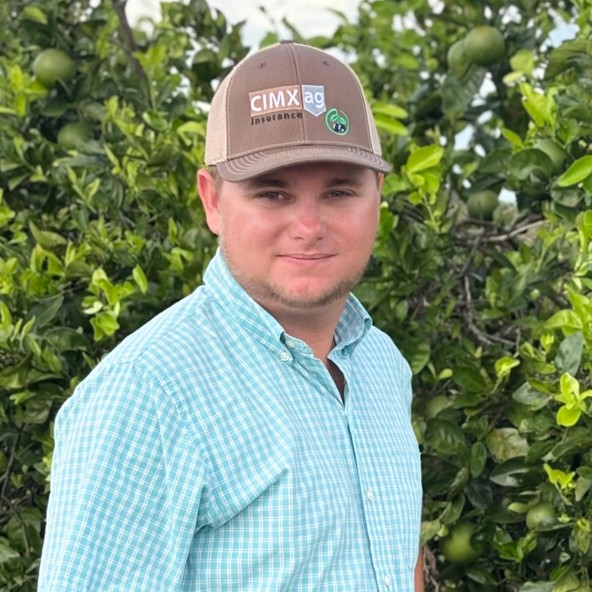
The cotton jassid — also known as the two-spotted cotton leafhopper — is an invasive pest recently found in parts of Florida and South Georgia. While it may be small (only about one-tenth of an inch long), this pale green insect can cause big problems for cotton, okra, eggplant, and other crops.
Why It Matters
Cotton jassids feed on the underside of leaves, sucking out sap. This feeding causes tissue damage called hopperburn, which shows up as yellowing or reddening along leaf edges, curling, puckering, and in severe cases, premature leaf drop. When infestations are heavy, the damage can quickly reduce plant vigor and yield.
Signs to Watch For
- Yellow, red, or brown margins on leaves
- Curling or puckering of leaves, especially on young plants
- Premature leaf drop
- Small green insects with two dark spots on their wings, especially on the underside of leaves
Scouting is key. Walk into the field several rows, check leaves from the top portion of the plant, and look closely for both nymphs and adults. Early detection can make a big difference.
Prevention and Control Tips
1. Start with good cultural practices
- Plant early when possible.
- Maintain proper plant spacing.
- Remove volunteer plants and weeds that can harbor pests.
- Avoid excessive nitrogen, which can make plants more attractive to jassids.
2. Choose resistant or tolerant varieties
Some cotton varieties are naturally less appealing to jassids and can limit damage.
3. Encourage beneficial insects
Lady beetles, lacewings, spiders, and predatory wasps feed on jassids. Avoid overuse of broad-spectrum insecticides that might harm these natural helpers.
4. Apply insecticides when thresholds are reached
Treating too early or too often can lead to resistance. The jassid is most vulnerable in the nymph stage. Extension specialists are currently recommending treatment when both visible damage and several nymphs per leaf are present. Rotating insecticide classes is important to maintain effectiveness.
How CIMXag Can Help
At CIMXag Insurance, our job is to protect your bottom line — and that means helping you stay informed about emerging threats like the cotton jassid. While crop insurance can’t stop an infestation, it can help safeguard your income if pest damage leads to lost yield. We work closely with local experts to monitor conditions and keep growers updated so you can take action before losses escalate.
If you’re concerned about cotton jassid in your area, give us a call. We’ll make sure your coverage is set up to protect you, and we’ll connect you with the latest field recommendations to keep your crop healthy.






























